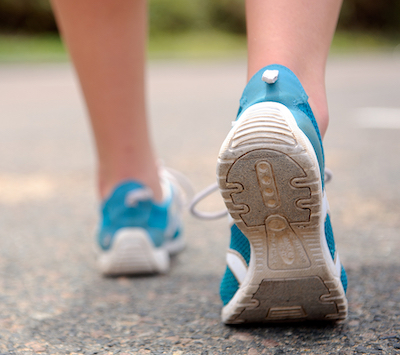Choosing the right footwear is essential for both your comfort and health, whether you’re taking a leisurely stroll or pushing your limits in a marathon. With a vast array of options available, it can be overwhelming to determine the best pair for your needs. In this article, we will examine the key differences between running shoes and walking shoes, delving into their unique features, benefits, and ideal uses.
Section 1: Running Shoes
1.1 Design and Features
Running shoes are specifically engineered to accommodate the high impact and repetitive motion associated with running. As such, they typically boast more cushioning in the heel and forefoot to absorb shock, provide stability, and reduce the risk of injury. Additionally, running shoes are designed with lightweight materials to promote speed and efficiency, while still offering ample support.
1.2 Types of Running Shoes
Running shoes can be categorized based on the level of support and cushioning they provide. The three main types are:
a. Neutral Running Shoes: Ideal for runners with a neutral gait, these shoes offer a balance of cushioning and support. They’re perfect for individuals who don’t overpronate (roll inward) or supinate (roll outward) excessively while running.
b. Stability Running Shoes: Designed for runners who experience mild to moderate overpronation, these shoes feature additional support and structure to help guide the foot into a more neutral position during the gait cycle.
c. Motion Control Running Shoes: Targeting severe overpronators, motion control shoes offer maximum support and stability to prevent excessive inward foot rolling.
1.3 Benefits of Running Shoes
The key benefits of running shoes include:
- Enhanced shock absorption: Superior cushioning minimizes the impact on joints, reducing the risk of injury.
- Improved stability and support: Running shoes can correct gait irregularities, allowing for a more efficient and comfortable running experience.
- Lightweight design: The use of lightweight materials reduces fatigue and increases overall performance.
Section 2: Walking Shoes
2.1 Design and Features
Walking shoes are tailored to the unique biomechanics of walking, which involves a heel-to-toe rolling motion. As a result, they typically feature a more flexible sole and a slightly curved shape to facilitate a smooth, natural stride. The cushioning in walking shoes is often less than in running shoes since the force exerted on the feet is lower during walking. However, walking shoes still provide ample support and comfort for extended periods of walking.
2.2 Types of Walking Shoes
Walking shoes can be broadly classified into two categories:
a. Performance Walking Shoes: These shoes are designed for individuals who walk long distances, participate in walking events, or power-walk. They feature lightweight construction, moderate cushioning, and additional support for a comfortable and efficient stride.
b. Casual Walking Shoes: Ideal for everyday wear and short walks, these shoes prioritize comfort and style over performance. Casual walking shoes typically offer more cushioning and a roomier fit, making them perfect for all-day wear.
2.3 Benefits of Walking Shoes
The primary advantages of walking shoes are:
- Flexibility: The flexible sole promotes a natural walking motion, enhancing comfort and reducing fatigue.
- Optimal support: Walking shoes provide the right balance of support and cushioning for comfortable, extended periods of walking.
- Versatility: Suitable for various terrains and daily activities, walking shoes offer a more casual and versatile option.
Section 3: Making the Right Choice
3.1 Assessing Your Needs
When deciding between running shoes and walking shoes, it’s essential to consider your specific requirements. If you predominantly run or engage in high-impact activities, opt for running shoes designed to meet the demands of such exercises. Conversely, if you primarily walk or require comfortable footwear for daily use, walking shoes are the better choice. Keep in mind that you can also own both types of shoes to suit different activities, as using the appropriate footwear can significantly impact your comfort, performance, and injury risk.
3.2 Trying Before Buying
It’s crucial to try on several pairs of shoes before making a purchase. While shopping, consider the following tips:
- Shop later in the day: Your feet tend to swell throughout the day, so trying on shoes in the afternoon or evening will ensure a more accurate fit.
- Bring the right socks: Wear the socks you plan to use for running or walking to get a true sense of how the shoes will feel.
- Allow for wiggle room: Ensure there’s enough space (about half an inch) between your longest toe and the front of the shoe to accommodate foot expansion during exercise.
3.3 Seeking Professional Advice
If you’re unsure about which shoes to choose, consult a specialist at a reputable sports store or a podiatrist. These professionals can analyze your gait, identify any pronation issues, and recommend the most suitable type of footwear for your needs.
The debate between running shoes and walking shoes ultimately boils down to personal preferences and intended use. Running shoes are tailored for high-impact activities, offering superior cushioning, stability, and lightweight design. In contrast, walking shoes focus on flexibility, support, and versatility for a comfortable walking experience. By evaluating your specific needs and seeking professional guidance, you can make an informed decision and invest in the ideal pair of shoes to support your athletic or everyday endeavors.










